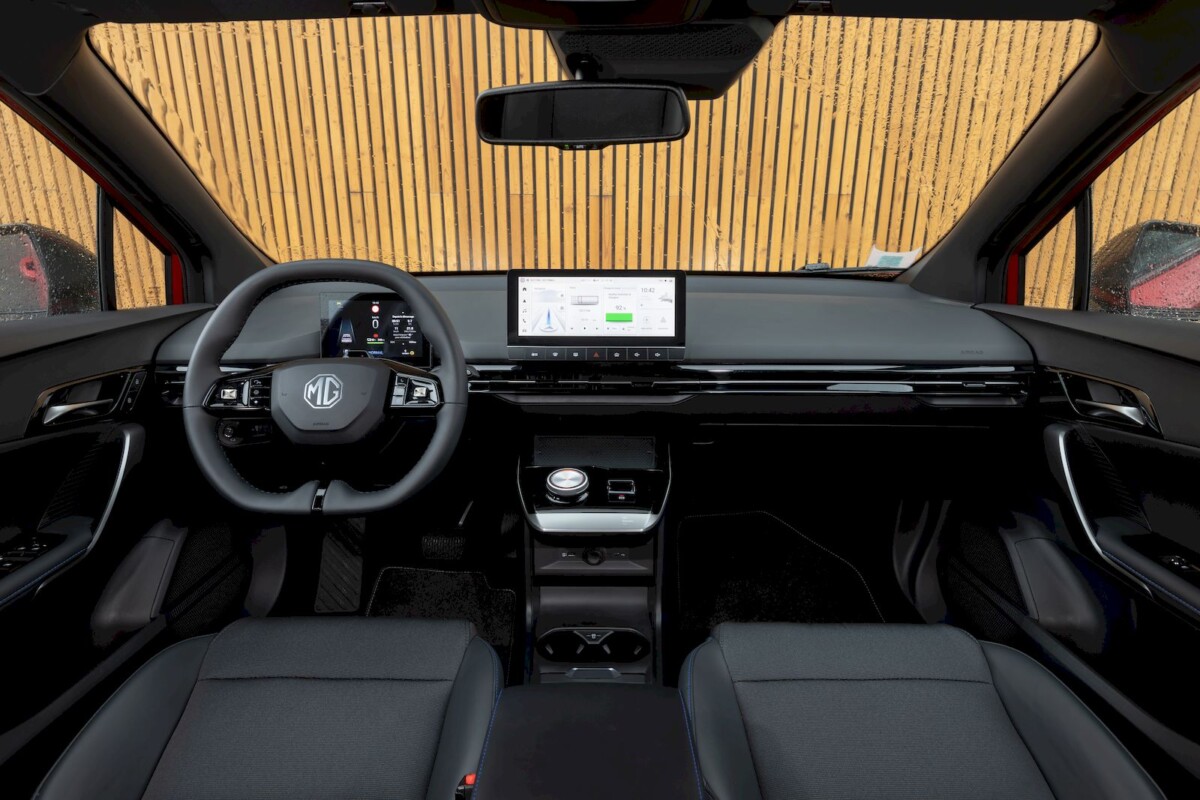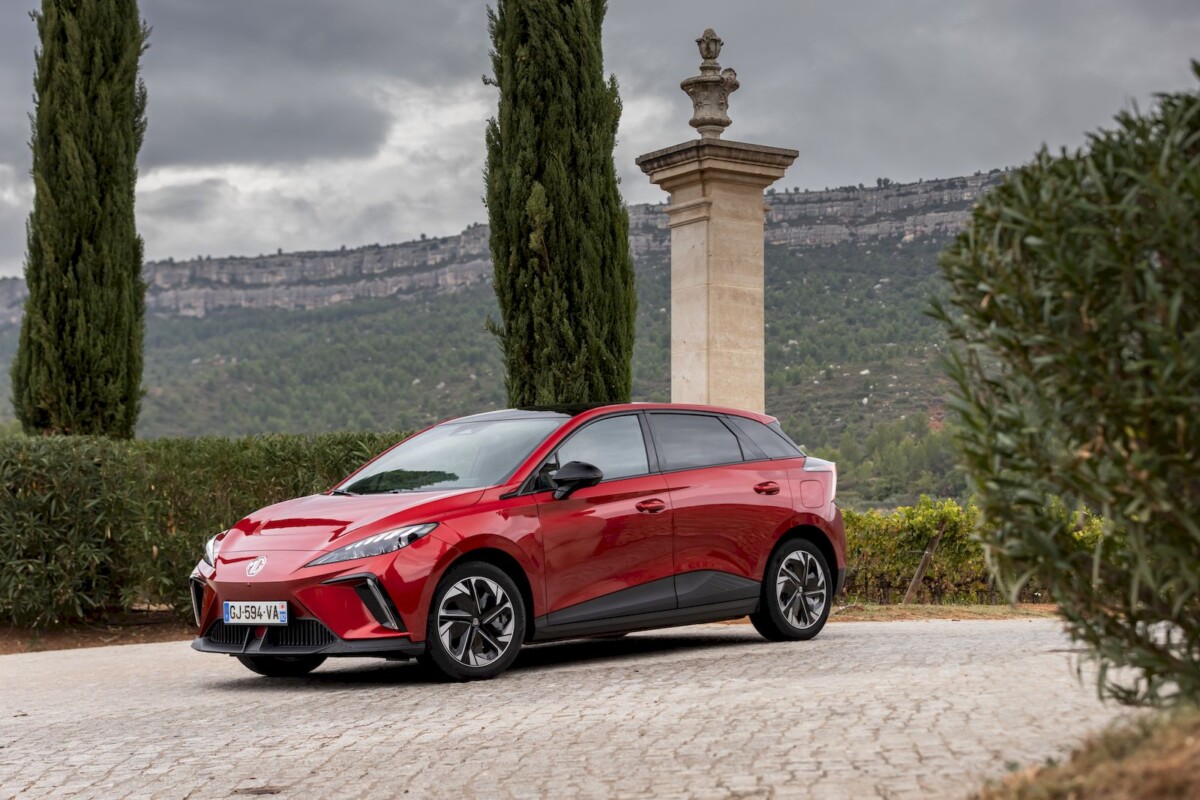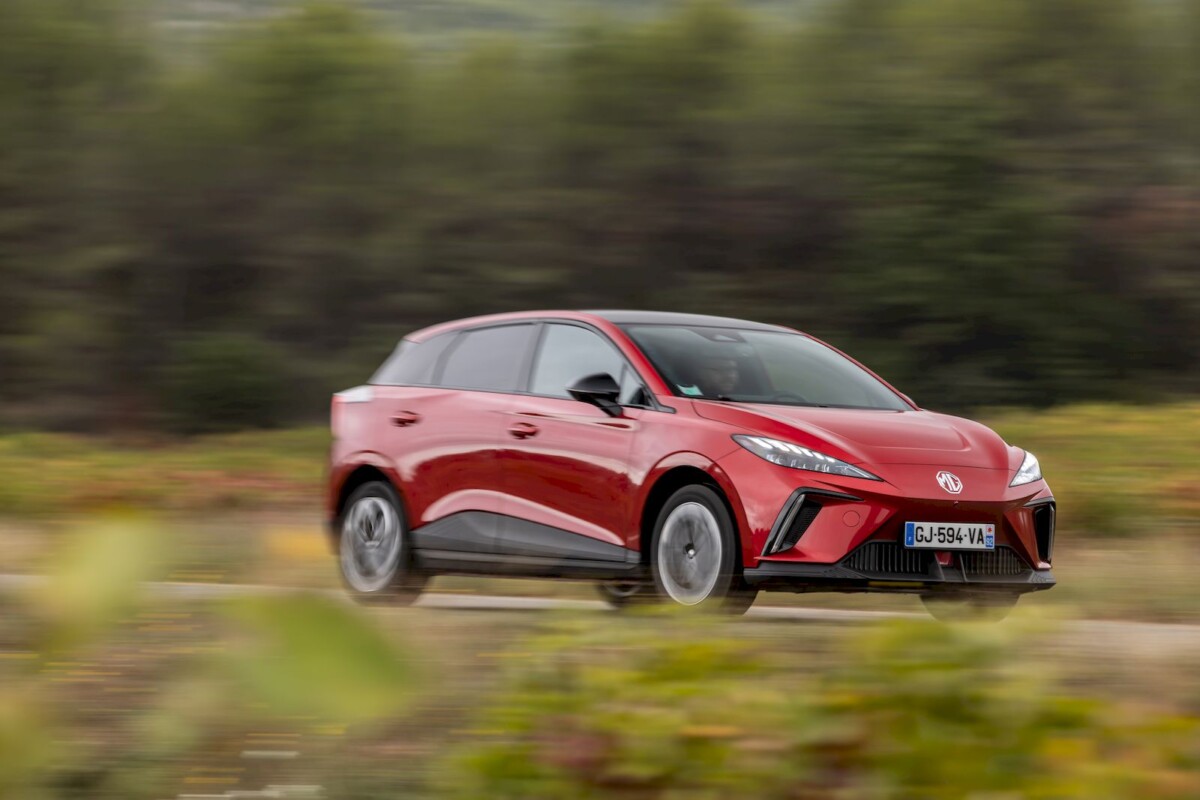Among the automotive manufacturers that have recently established a presence in France, MG stands out as the most successful. Their strategy appears simple compared to other manufacturers constantly chasing innovation and cost reduction or attempting to imitate Tesla. Instead, MG relies on direct online orders and employs somewhat opaque after-sales service methods.
At MG, everything seems straightforward. To sell cars in Europe in 2022, they make electric vehicles that are affordable and cater to popular segments while adhering to European standards. To sell many cars quickly, they establish close proximity to customers, with 145 sales points already in place and an integrated after-sales service.
Despite some delivery challenges this year for well-known reasons, MG aims to sell between 10,000 and 12,000 vehicles in France by the end of the year. The new MG4, available for order since September, is already making an impressive impact in dealerships and may well help the manufacturer reach this goal.
The MG4, which is expected to quickly become the best-selling MG model in France alongside the ZS, marks the beginning of a lineup of 10 new models (mostly electric, but also internal combustion and plug-in hybrid) arriving in Europe by 2025.

Specifications
| Model | MG MG4 |
|---|---|
| Dimensions | 4,287m x 1,836m x 1,516m |
| Power (horsepower) | 204 hp |
| 0 to 100km/h (0 to 62mph) | 7.7 seconds |
| Autonomy level | Partial autonomy |
| Top speed | 160 km/h (99 mph) |
| Main screen size | 10.25 inches |
| Charging port on the car | Type 2 Combo (CCS) |
| Price | €28,990 |
Design
The car measures 4.29 meters in length, 1.84 meters in width, and 1.50 meters in height. Aesthetically, the MG4 takes inspiration from various European design elements, though some imagination is required. Indeed, some might see a hint of the new Chevrolet Corvette or Lamborghini in the front headlights, while the rear resembles that of a Hyundai i20.
From the side, the “SUV-like” silhouette, with a relatively high ground clearance for a compact car, is reminiscent of a Peugeot 2008, especially with its strongly defined waistline.
With a drag coefficient of 0.275, the MG4 is not the most aerodynamic electric vehicle, and its plunging, shark-nose front end may cause pedestrian safety concerns for Euro NCAP. However, MG still hopes for at least a 4-star rating. Results will be available in November.

Interior Space
MG opted for minimalism in the cabin, though not as extreme as Tesla or Volkswagen ID.3. There’s no start button; pressing the brake and shifting to “D” mode starts the car. However, the waiting time can be long, and it’s unclear why it doesn’t start more quickly.
We’ll discuss the infotainment system later, but overall, the ergonomics are good, with a row of shortcut buttons for quick access to certain functions. As in many modern cars, the lack of physical climate controls is regrettable.

The floating center console, currently trendy among manufacturers, includes a wireless charging pad for smartphones. However, the thin edges and rubber material don’t hold phones securely during tight turns. A USB-A port and a USB-C port are located under the center console and are somewhat difficult to access.

In terms of finish, MG has its hits and misses. The visible upper materials are adequate, but the lower plastics are mediocre and easily scratched. The fit and finish are average, not disastrous, but given the recent ZS facelift, we expected better.
Where the MG4 excels is interior space. Passengers enjoy comfortable, soft seats, and rear knee room is more than adequate for tall adults. The trunk isn’t huge, but at 363 liters, it’s not bad for a compact electric vehicle.

Onboard Technologies
Inside, the MG4 comes standard with a 7-inch instrumentation system and a 10.25-inch central display. The multimedia system is compatible with Apple CarPlay and Android Auto. The menu graphics are quite good, the navigation system is decent, and the ergonomics are relatively simple compared to what electric car production generally offers.
However, the steering wheel controls are awkwardly placed. It’s hard to know the function of each button, so you end up pressing almost everything before arriving at the right menu. And you’ll have to make your adjustments quickly since the selected menu disappears rapidly and returns to the main screen automatically.
Accessing the driving modes is not the easiest, but we’ve seen worse, while the low-speed panoramic camera display is annoying, especially when approaching an intersection where you need your GPS more than a camera showing what’s happening around you while not maneuvering.

The car can receive remote updates, and the iSmart app allows you to manage several elements remotely, such as charging management, the alarm, cabin pre-conditioning, and remote locking.
It’s also possible to plan a route, but only through the app and not directly from the GPS. The car won’t provide information on your charge level upon arrival or possibilities for stopping at charging stations. Therefore, there’s no route planner, making long trips challenging since you’ll need to use apps like Chargemap or A Better Route Planner.
In terms of driving assistance, the MG4 is among the top performers in its category, at least on paper. In practice, however, this is much less the case. The car comes standard with the MG Pilot system, which includes several ADAS features. Adaptive cruise control, high-beam switching, traffic jam assistance, automatic emergency braking, and lane-keeping assistance are all present, but the overall experience is not satisfactory.
On highways, activating the system, the adaptive cruise control works well (although the braking when approaching the car ahead is a bit too noticeable), but the lane-keeping assistance spoils the experience. We won’t go as far as saying it’s dangerous, but there were times when we had to intervene to correct the course due to its lack of precision.
For example, when making adjustments in semi-autonomous driving (level 2), you must not hesitate to give a quick turn on the steering wheel to regain control, as the automatically guided direction becomes very stiff and primarily follows the lines without really considering what’s happening around, even with a truck encroaching on our lane.
Driving
The MG4 is based on a new modular MSP (Modular Scalable Platform) developed in-house by SAIC Motor, MG’s parent company. Two battery options are available: 51 and 64 kWh, offering 350 and 450 km of range on a single charge, respectively, according to the WLTP cycle.
The brand states that other variants are planned, including a version with a 77 kWh battery promising well over 500 km of WLTP range. For the larger battery, the electric motor produces a maximum power of 204 hp, only at the rear axle. The 51 kWh battery version offers 170 hp.
The MG4 accelerates from 0 to 100 km/h in less than 8 seconds (7.9 seconds for the 204 hp model and 7.7 seconds for the 170 hp model), and the top speed is limited to 160 km/h. These values are very close to the Volkswagen ID.3. MG claims a 98.5% efficiency for its permanent magnet synchronous electric motor.
Good news, the first test drive of the MG4 puts a smile on one’s face. From the first turns in the hinterland of Aix-en-Provence, the car is more dynamic than its competitors, thanks to its impressive technical specifications: 204 hp, 250 Nm, 1,685 kg (a contained weight due to the use of many aluminum elements), 50:50 weight distribution, and rear-wheel drive.
Its agility is remarkable on turns, with a sharp front axle and a rear axle that can be quite playful with some coaxing. The steering is precise in the middle, but lacks feedback and is too assisted.
Nevertheless, the front axle enters turns with enthusiasm, while the rear axle smoothly rolls before slightly slipping in “Sport” mode where the degree of ESP intervention is reduced. In terms of dynamism, the MG4 performs significantly better than the ID.3 and slightly better than the Renault Mégane E-Tech. Mission accomplished.
In terms of comfort, it manages not to be bad either, although our opinion is more mixed. The filtering quality is very good on small bumps (thanks to 16 to 17-inch rims, “only” one could say in an era where big rims are in fashion), but the suspension becomes paradoxically stiffer on larger bumps, especially at the rear.
However, this is not a dealbreaker. The MG4 is a rear-wheel drive, and the advantage of rear-wheel drive, besides its dynamic abilities, is also its turning radius. MG announces a turning diameter of only 10.6 meters.
It should also be noted that a 450 hp version will arrive in the coming months and will have all-wheel drive. The 0 to 100 km/h is already announced at 3.9 seconds, a value very close to that of some seasoned sports cars.

Autonomy, Battery, and Charging
The new modular architecture offers many advantages in terms of flexibility, space optimization, safety, driving experience, weight savings, and technologies. Its design can accommodate wheelbases ranging from 2.65 meters to 3.10 meters, suggesting the arrival of new models, both smaller and larger, based on this same platform. Thanks to this design, it is theoretically possible to easily use batteries ranging from 40 kWh to 150 kWh and an architecture ranging from 400 to 800 volts for faster charging.
This new platform also incorporates a “One Pack” battery technology. Thanks to the horizontal arrangement of the battery elements, its minimum height can reach a value of 11 cm, significantly improving space utilization.
The 51 kWh battery (50.8 kWh in net capacity) is based on LFP (Lithium Fer Phosphate) technology, while the 64 kWh battery (61.7 kWh in net capacity) is based on NMC (Nickel Manganese Cobalt). The larger battery’s accumulators are expected to be less durable over time than the smaller battery since they have been tested to undergo 3,000 recharge cycles compared to 7,000 for the base model. Both battery packs are supplied by CATL.
Like Nio, MG is also working on battery exchange technology. The principle is simple: exchange an empty battery for a full one while the other one is recharging. A maneuver that would take less than 5 minutes. However, MG has not given a date for the arrival of this type of service in Europe.
The maximum DC charging power is 135 kW (117 kW for the small battery), while a Marvel R, the manufacturer’s highest-end model, tops out at 92 kW. The maximum power of the onboard charger is 6.6 kW on the small battery version and 11 kW on the others.
In this trial format, we were unfortunately unable to test charging, but one of our colleagues experienced a charge from 15 to 80% on an Ionity station, with a peak charging rate of 144 kW (higher than the maximum value communicated by MG) up to around 60%.
MG claims a 10 to 80% charge in about 35 minutes, but it is possible to do slightly less. The brand announces 6 hours 30 minutes for a 10 to 100% charge, thanks to its 11 kW charger, standard on the “Luxury” trim level.
However, we were able to observe the consumption on various types of routes during this test. On the highway, we recorded a consumption of around 21.5 kWh at an average speed of 126 km/h with the ventilation turned on. This is not the best in its category, but it suggests a range of around 280 km at this pace on the highway.
On a route composed of many country roads, some elevation changes, and a few dynamic driving sections, we recorded around 18.3 kWh/100 km, or approximately 360 km of range. By having a lighter foot at certain times, we could have easily gone below 18 kWh/100 km and aimed for 400 km of mixed-use range.
It’s worth noting that the regenerative braking has three levels that can be selected via a steering wheel control. The strongest level (up to 0.15 G of deceleration) is not as pronounced as expected, and it does not allow for one-pedal driving like the Nissan Leaf, for example. Too bad.
Price and competition
The major advantage of this new MG4 is, of course, its price, starting at $28,990 before the $6,000 eco bonus. This brings the total cost down to $22,990.
The vehicle is available for delivery before the end of the year (starting January 1st, the maximum bonus will be reduced to $5,000), so it’s possible to take advantage of the largest bonus available as long as the order is placed in time. The top-of-the-line model is priced at $34,990, still before the $6,000 bonus.
Its competitors are easy to identify, as they include the Renault Mégane E-Tech and Volkswagen ID.3, with prices starting at $37,200 (before the bonus, 40 kWh battery, and 300 km WLTP range) and $44,990 (before the bonus, 58 kWh battery, and 424 km WLTP range), respectively, for a base package that is not necessarily better.

By default, on the “Standard” trim level (only available with the 51 kWh battery), the MG4 includes:
- Fast charging (DC) up to 117 kW
- 3-level regenerative braking
- MG Pilot driver assistance
- 7-inch digital display
- 10.25-inch floating touchscreen
- Keyless entry and start
- LED headlights
- V2L (Vehicle to Load) 220 volts system
- Rear parking sensors
For the 64 kWh battery, the range structure is different with, by default, the “Comfort” trim level (+ $4,000) which includes the basic equipment of the “Standard” trim level and, in addition:
- Fast charging (DC) up to 135 kW
- Active shutter grille
- Tinted rear windows
- 17-inch alloy wheels with aerodynamic trim
- Leather steering wheel
The top-of-the-range “Luxury” model comes with all the features mentioned earlier, plus:
- Double rear spoiler
- Heat pump
- Heated front seats
- Heated leather steering wheel
- 360° camera
- Real-time navigation
- Wireless phone charging
- Electrically adjustable driver’s seat
- Black leatherette seats
- Blind spot monitoring
- Contrasting black roof
Note that there are not many options, as there is only a choice of color ($650) and light upholstery ($650). It’s also unfortunate that the heat pump is only available on the “Luxury” model and not available as an option on other models.
Also, be aware that the double rear spoiler on the Luxury model increases the car’s consumption and therefore slightly reduces its range.
The MG4 already has a financing offer starting at $249 per month, without a down payment, which we recently analyzed in our dedicated section. Its 7-year or 150,000 km warranty will undoubtedly appeal to buyers.
Editor’s Verdict
The MG4 stands out for its unbeatable dynamism in its segment and ultra-competitive prices. It is undoubtedly the best value for money on the market, even if it doesn’t do everything better than everyone else. In terms of finishes and driving assistance technologies, there are things to review, and these few shortcomings should probably be corrected as was the case with the ZS EV.
The car’s few shortcomings should not discourage customers looking for a new, well-equipped electric model at an attractive price. The highest-end version doesn’t even reach the price level of entry-level versions of the Volkswagen ID.3 and Renault Megane E-Tech. The MG4 wins the game right away and should allow the brand to achieve record sales this year, and even more next year.
Unfortunately, the absence of a planner, which makes long trips much more complicated, costs it a point. However, it remains the car with the best value for money at the moment.
Positive points of the MG4:
- Unbeatable prices
- Driving pleasure
- Correct standard equipment
- Density of the distribution network
Negative points of the MG4:
- Driving assistance to be improved
- Some ergonomics points to be modified
- No heat pump as an option on base versions
- No itinerary planner.


